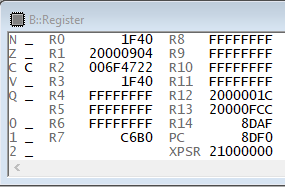Other Parts Discussed in Thread: SYSCONFIG
Tool/software:
Hello,
We have been running a project successfully with a MSPM0L1306SDGS20 for around one year. We had to change to a larger version and switched to MSPM0L1306SDGS28, so from 20 pin to 28 pin. The same code that runs OK in the 20-pin generates a hard fault in the 28-pin micro. Some testing suggests that the hard fault is linked to read access of the SysTick->VAL register.
Other symptom is the fact that the timing for the hard fault to occur is variable but most of the times being between 150-200ms which means that there are a lot of valid SysTick accesses before a faulty one. This also means that the value of SysTick->VAL is different after every crash.
We were under the assumption that the only difference is the IC package footprint but the same in every other way. Any other differences that could be the issue here?








